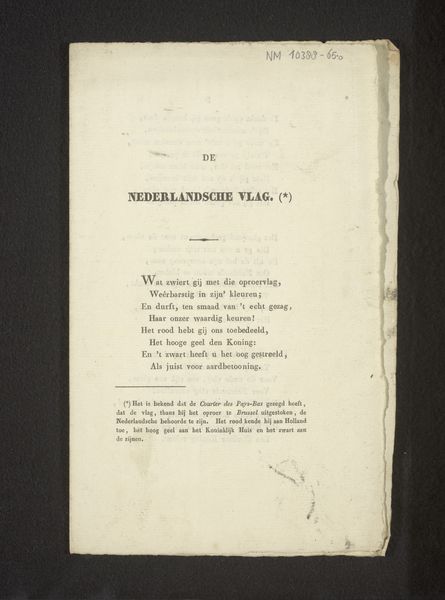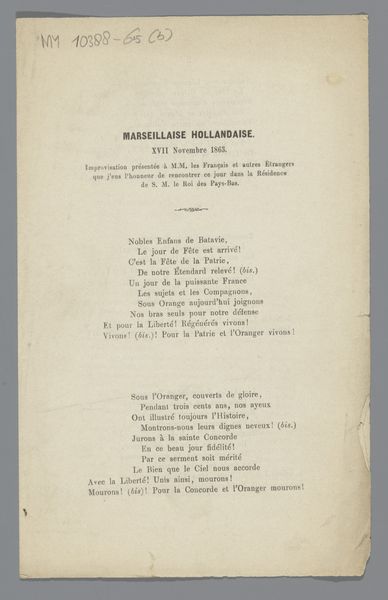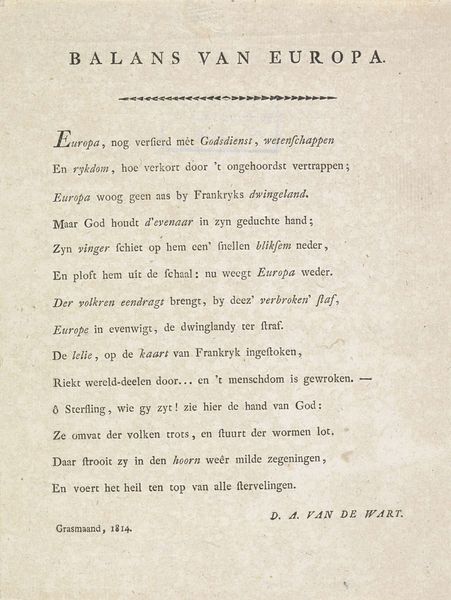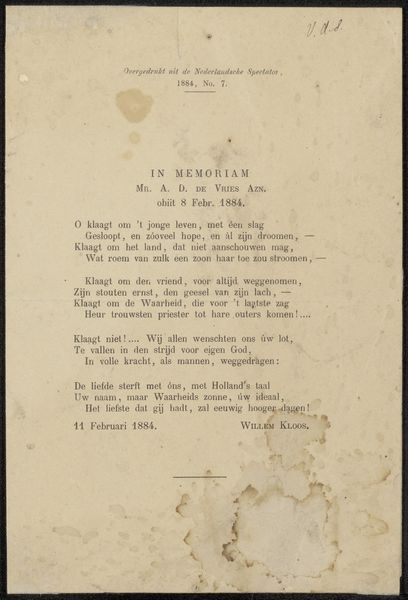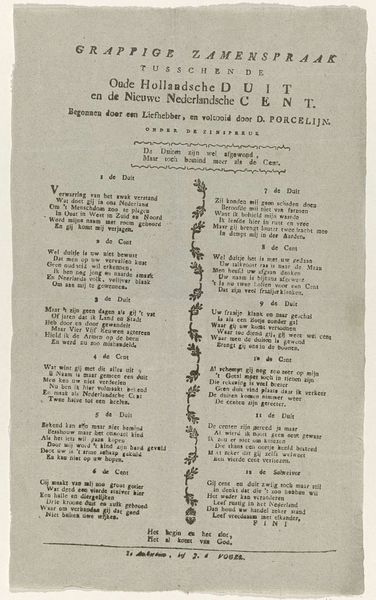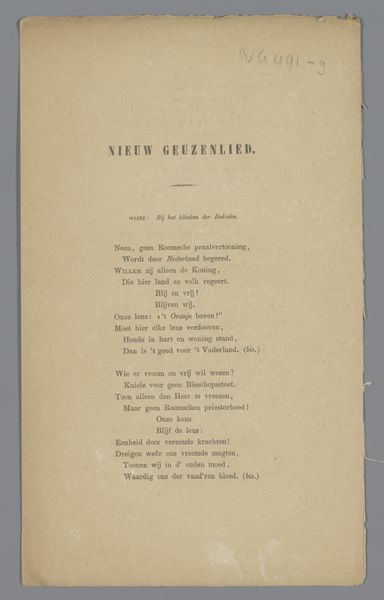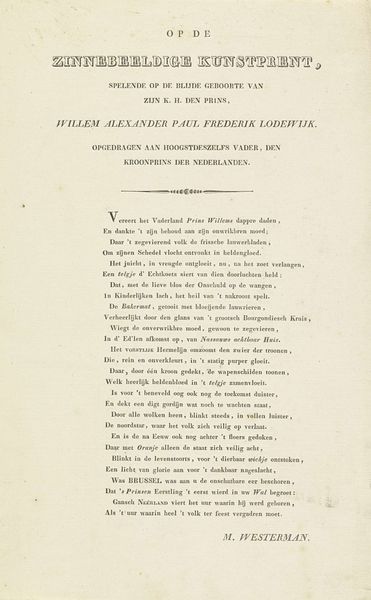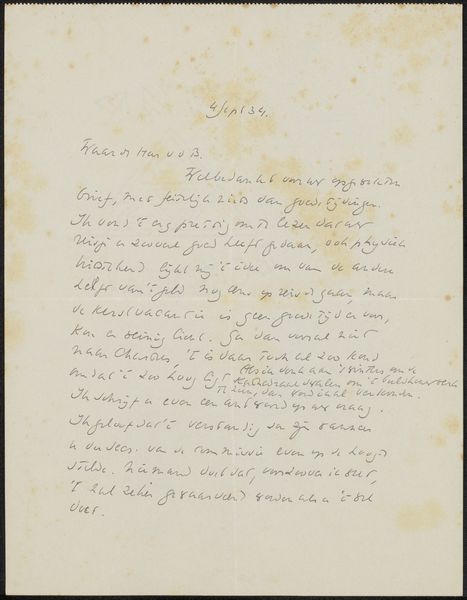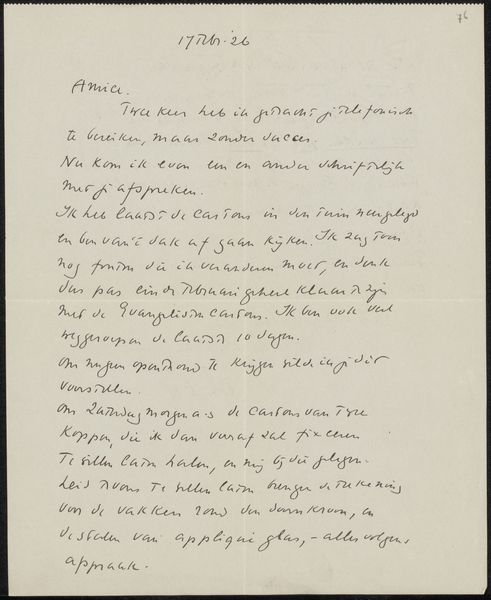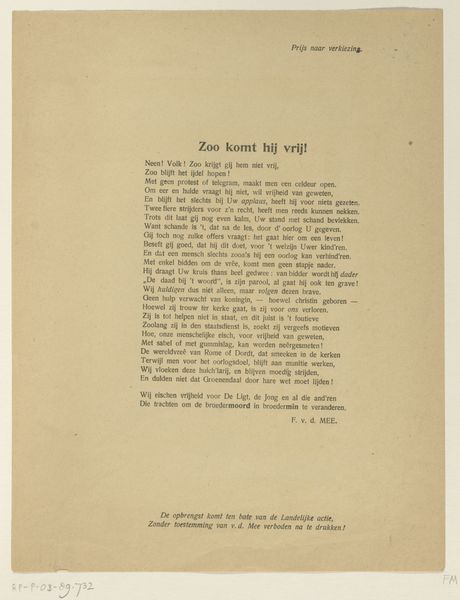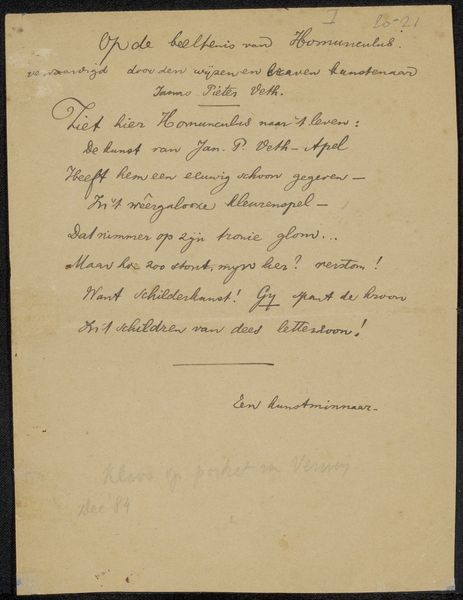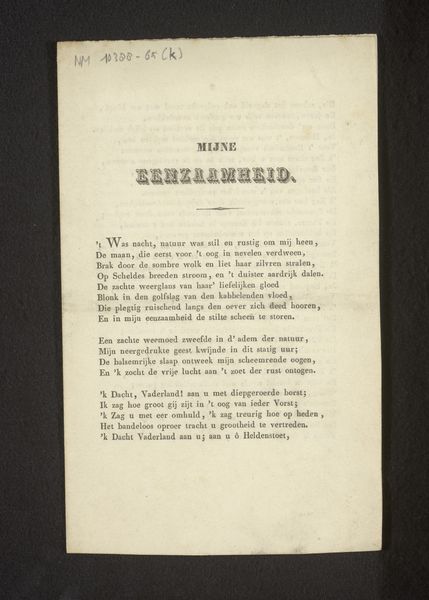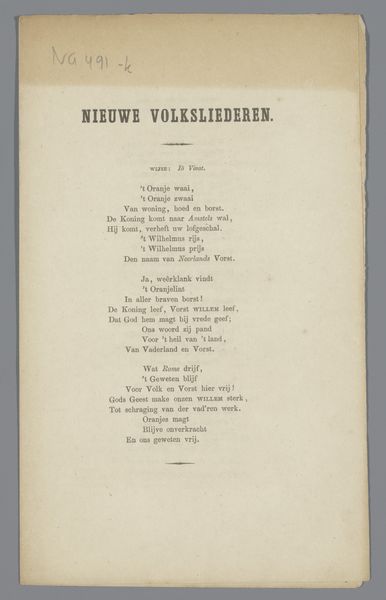
Woorden gezongen bij de aanbieding van het huldeblijk aan Hendrik Willem Mesdag Possibly 1901 - 1923
0:00
0:00
jozefisraels
Rijksmuseum
drawing, print, paper, typography, ink
#
portrait
#
drawing
#
art-nouveau
# print
#
paper
#
typography
#
ink
#
watercolor
#
calligraphy
Copyright: Rijks Museum: Open Domain
Editor: So, here we have “Woorden gezongen bij de aanbieding van het huldeblijk aan Hendrik Willem Mesdag,” possibly created between 1901 and 1923 by Jozef Israëls. It's a print with ink and watercolor on paper, and I immediately notice how the smudges around the edges add an element of decay, almost like a manuscript found long after its creation. What catches your eye when you look at it? Curator: What I find interesting here is the act of creating a tangible object – the print itself – to honor another artist, Mesdag. It’s not just the words, but the material means of production that matter. Think about the labor involved: designing the typography, printing the poem, and even the paper itself, its sourcing and preparation. The use of watercolor further enhances its artistic value but, crucially, what was the status of 'print' at this moment in time? Was it considered art? Craft? Industry? The overlap interests me most. Editor: That's fascinating. So you’re less focused on the content of the poem and more on the object itself and its making? Curator: Exactly! This piece straddles the line between fine art and printed ephemera. The materiality—the paper, the ink, the printing process—speaks volumes about its social function and the relationship between art, labor, and tribute. It makes you wonder about the accessibility and reception of this printed tribute versus a painted portrait, for instance. Was this mass produced or hand printed for a select group? Editor: That raises interesting questions about accessibility and value. How does thinking about it this way change our understanding of the artwork? Curator: It forces us to reconsider traditional hierarchies in art. We start to value the production process and social context as much as the aesthetic qualities of the poem or the skill in the calligraphy. This reframing allows us to see the print as a cultural artifact, shaped by material conditions and social relations, instead of just a pretty tribute. Editor: I never thought about it that way. I learned a lot about material's and means of production this time!
Comments
No comments
Be the first to comment and join the conversation on the ultimate creative platform.
